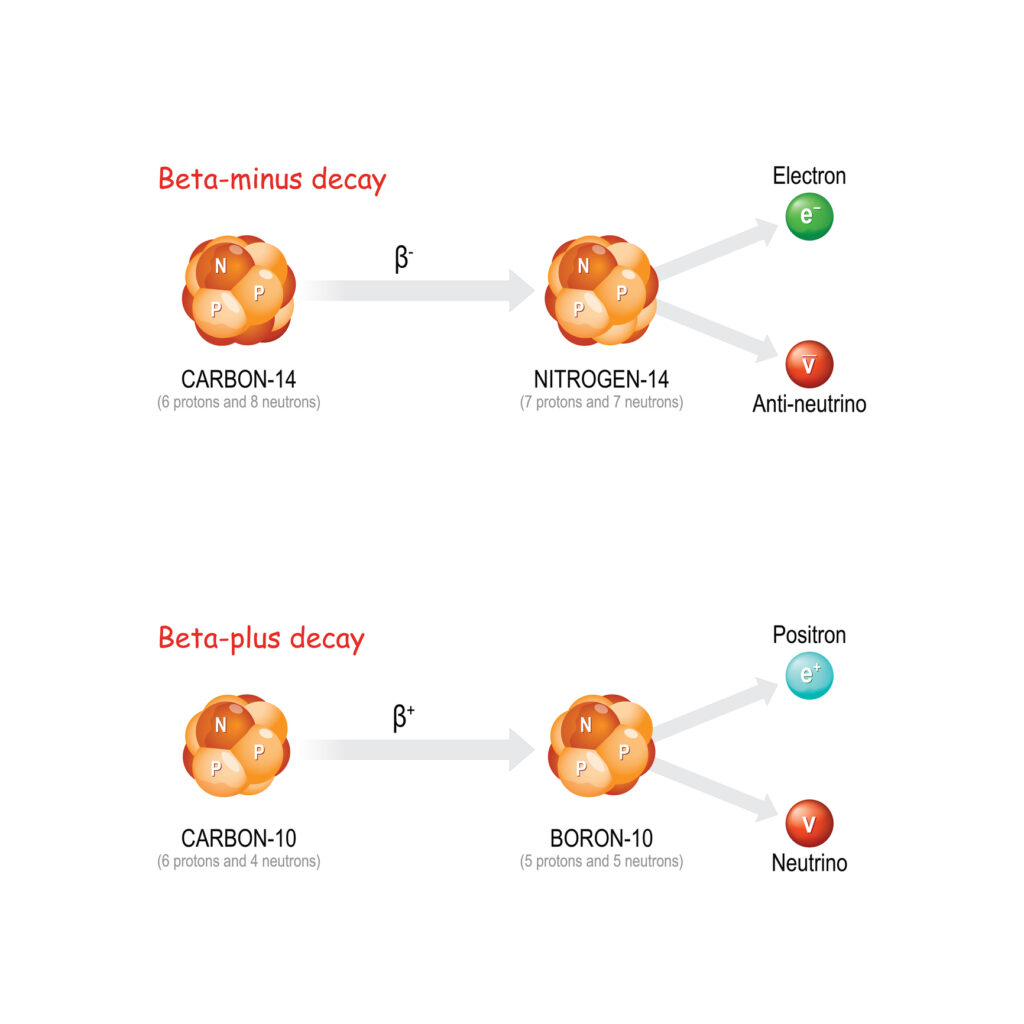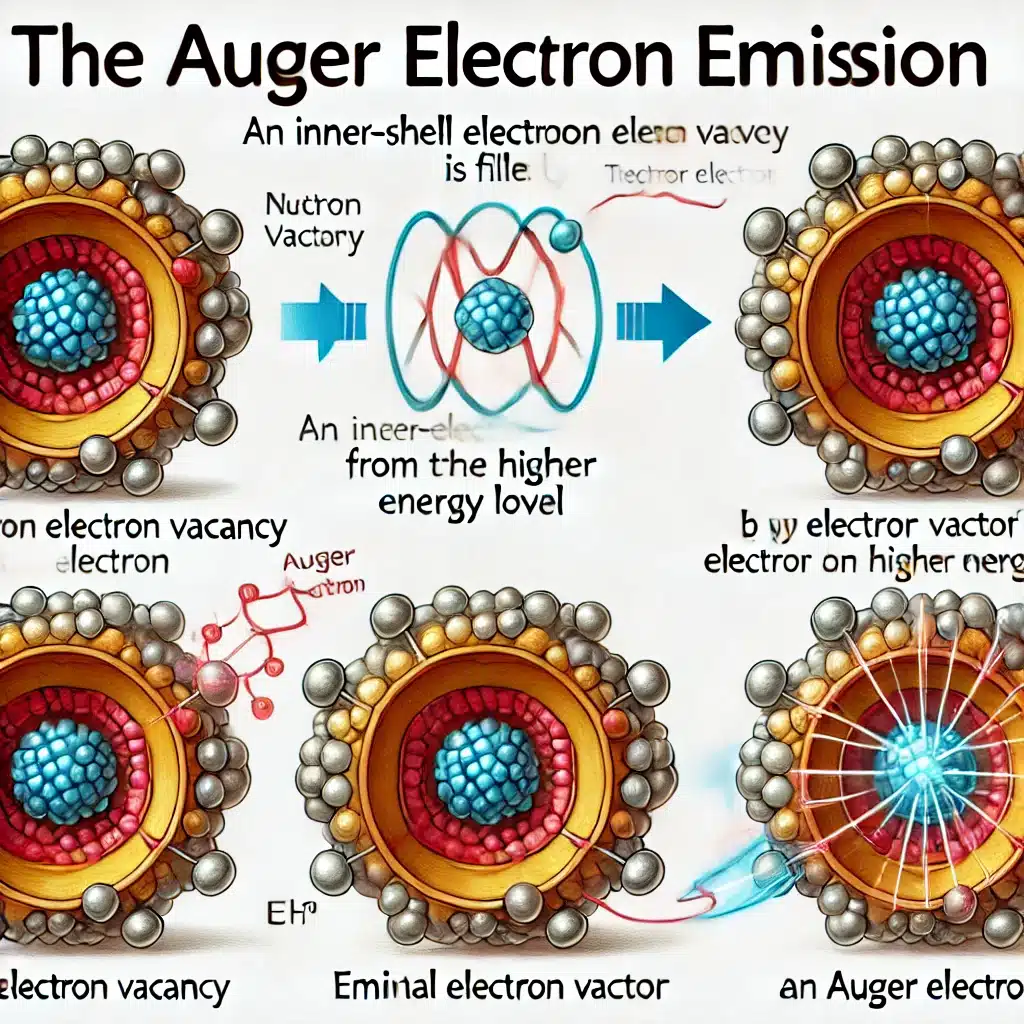Quantum mechanics is one of the most intriguing and fundamental theories in physics, describing the behaviours of particles on the smallest scales. This blog article examines the principles, interpretations, and applications of quantum mechanics, providing a thorough understanding of this fascinating subject. Starting with a historical overview, we explore key concepts such as wave-particle duality, the uncertainty principle, quantum entanglement, and superposition. The article also addresses the various interpretations of quantum mechanics, including the Copenhagen interpretation, Many-Worlds theory, and others. Additionally, the article highlights the significant applications of quantum mechanics in modern technology, such as quantum computing and cryptography. Finally, the article discusses the philosophical implications of quantum mechanics and its role in the broader context of physical theory.
Introduction to Quantum Mechanics
Quantum mechanics is the branch of physics that deals with the behaviour of matter and energy on the smallest scales, typically at the level of atoms and subatomic particles. Unlike classical mechanics, which governs the motion of macroscopic objects and is intuitive to human understanding, quantum mechanics introduces a set of principles that often defy our everyday experience. The development of quantum mechanics in the early 20th century marked a revolution in physics, fundamentally altering our conception of the universe.
Historical Background
The origins of quantum mechanics can be traced back to the late 19th and early 20th centuries, a period when classical physics was unable to explain certain phenomena observed in nature. One of the key challenges was the blackbody radiation problem. According to classical physics, a perfect blackbody should emit infinite amounts of energy at ultraviolet frequencies, leading to what was known as the ultraviolet catastrophe. However, experiments showed that this was not the case.
In 1900, the German physicist Max Planck proposed a solution to this problem by introducing the idea that energy is quantised, meaning it is emitted in discrete packets called “quanta”. This concept, although initially met with scepticism, laid the groundwork for quantum mechanics. Planck’s work was followed by Albert Einstein’s explanation of the photoelectric effect in 1905, which demonstrated that light also behaves as a particle, further supporting the quantum hypothesis.
As the 20th century progressed, other physicists such as Niels Bohr, Werner Heisenberg, and Erwin Schrödinger contributed to the development of quantum mechanics, each bringing their own insights and formalisms to the theory. Bohr’s model of the atom, Heisenberg’s matrix mechanics, and Schrödinger’s wave equation were all milestones in the establishment of quantum mechanics as a fundamental theory in physics.
Wave-Particle Duality
One of the most profound aspects of quantum mechanics is the concept of wave-particle duality, which states that particles such as electrons and photons exhibit both wave-like and particle-like properties. This duality was first suggested by Einstein in his explanation of the photoelectric effect and was later confirmed by experiments such as the double-slit experiment.
In the double-slit experiment, a beam of light or electrons is directed at a barrier with two slits. If one slit is open, particles pass through it and create a single band pattern on a detection screen, as expected for particles. However, when both slits are open, an interference pattern emerges, characteristic of waves. This result implies that each particle passes through both slits simultaneously, interfering with itself, a concept that defies classical logic.
The wave-particle duality is encapsulated mathematically by the de Broglie hypothesis, which asserts that any particle with momentum has an associated wavelength, given by the equation:
λ=h/p
where λ is the wavelength, h is Planck’s constant, and p is the momentum of the particle. This equation bridges the gap between the wave and particle descriptions of matter, suggesting that all particles have wave-like properties.
The Uncertainty Principle
Another cornerstone of quantum mechanics is Heisenberg’s uncertainty principle, which states that certain pairs of physical properties, such as position and momentum, cannot be simultaneously measured with arbitrary precision. This principle is often expressed as:
ΔxΔp≥ℏ/2
where Δx is the uncertainty in position, Δp is the uncertainty in momentum, and ℏ is the reduced Planck’s constant.
The uncertainty principle implies that the more precisely we know the position of a particle, the less precisely we can know its momentum, and vice versa. This is not due to limitations in measurement technology but rather a fundamental property of nature. The principle challenges the classical notion of determinism, where the state of a system at any given time can determine its future evolution.
The uncertainty principle also has profound implications for the concept of reality in quantum mechanics. In classical physics, particles are thought to have well-defined properties that can be measured precisely. In quantum mechanics, however, the uncertainty principle suggests that these properties do not have definite values until they are measured.
Quantum Superposition
Quantum superposition is a fundamental principle of quantum mechanics that states that a quantum system can exist in multiple states simultaneously. This concept is famously illustrated by Schrödinger’s cat thought experiment, in which a cat in a sealed box is simultaneously alive and dead until the box is opened and the cat’s state is observed.
Mathematically, quantum superposition is described by the wavefunction, a complex-valued function that encodes the probabilities of a system’s possible states. The wavefunction evolves according to Schrödinger’s equation, and its square modulus gives the probability density of finding a particle in a particular state.
One of the key features of quantum superposition is that it leads to interference effects, as seen in the double-slit experiment. When a quantum system is in a superposition of states, the probabilities of different outcomes can interfere with each other, leading to results that would not be predicted by classical physics.
Quantum superposition also underlies the phenomenon of quantum entanglement, where the states of two or more particles become correlated in such a way that the state of one particle instantly influences the state of the other, regardless of the distance between them.
Quantum Entanglement
Quantum entanglement is one of the most intriguing and counterintuitive phenomena in quantum mechanics. When particles become entangled, their properties become correlated in such a way that the measurement of one particle’s state immediately determines the state of the other, even if they are separated by vast distances. This phenomenon was famously described by Einstein as “spooky action at a distance”.
Entanglement is a direct consequence of quantum superposition and is described mathematically by the entangled wavefunction. Unlike classical correlations, quantum entanglement cannot be explained by any local hidden variables; it is a purely quantum mechanical phenomenon.
The implications of entanglement are profound, not only for our understanding of the nature of reality but also for practical applications such as quantum computing and quantum cryptography. In quantum computing, entangled qubits can perform calculations that would be infeasible for classical computers. In quantum cryptography, entanglement can be used to create secure communication channels that are immune to eavesdropping.
Interpretations of Quantum Mechanics
The mathematical formalism of quantum mechanics is well established, but its interpretation has been the subject of much debate since its inception. Several interpretations attempt to provide a conceptual framework for understanding what the mathematical equations of quantum mechanics actually mean.
The Copenhagen Interpretation
The Copenhagen interpretation, developed by Niels Bohr and Werner Heisenberg, is perhaps the most widely taught interpretation of quantum mechanics. According to this view, the wavefunction represents our knowledge of a system, and it collapses to a definite state upon measurement. Before measurement, the system exists in a superposition of states, but these states are not considered “real” in the classical sense.
The Copenhagen interpretation emphasises the role of the observer in the measurement process, suggesting that the act of measurement plays a fundamental role in determining the outcome. This interpretation has been criticised for its lack of a clear definition of what constitutes a measurement and for its reliance on the concept of wavefunction collapse, which is not explained by the theory itself.
The Many-Worlds Interpretation
The Many-Worlds interpretation, proposed by Hugh Everett in 1957, offers a radically different perspective on quantum mechanics. According to this interpretation, the wavefunction never collapses. Instead, every possible outcome of a quantum measurement actually occurs, each in its own parallel universe. Thus, the universe splits into multiple, non-communicating branches, each representing a different outcome.
The Many-Worlds interpretation eliminates the need for wavefunction collapse and provides a deterministic view of quantum mechanics. However, it raises challenging questions about the nature of reality and the existence of an infinite number of parallel universes. While the Many-Worlds interpretation is mathematically consistent with quantum mechanics, it remains controversial due to its far-reaching philosophical implications.
Pilot-Wave Theory
The pilot-wave theory, also known as de Broglie-Bohm theory, is a deterministic interpretation of quantum mechanics that introduces the concept of a “pilot wave” guiding particles along deterministic trajectories. In this view, particles have well-defined positions and momenta at all times, and the wavefunction acts as a guiding field that determines their motion.
The pilot-wave theory is deterministic and avoids the concept of wavefunction collapse, but it requires the existence of non-local interactions, meaning that the behaviour of one particle can instantaneously affect another, regardless of the distance between them. This non-locality is in agreement with the predictions of quantum mechanics but is at odds with the relativistic notion that information cannot travel faster than the speed of light.
Although the pilot-wave theory provides a clear and intuitive picture of quantum mechanics, it has not gained widespread acceptance due to its departure from the conventional formalism and its implications for non-locality.
Objective Collapse Theories
Objective collapse theories propose that wavefunction collapse is a real, physical process that occurs spontaneously, rather than as a result of measurement. These theories introduce additional mechanisms or modifications to quantum mechanics that cause the wavefunction to collapse to a definite state over time.
One of the most well-known objective collapse theories is the GRW (Ghirardi-Rimini-Weber) model, which suggests that wavefunctions collapse at random intervals due to a stochastic process. Objective collapse theories aim to address some of the conceptual difficulties associated with the Copenhagen interpretation, such as the measurement problem, but they often require the introduction of new physical postulates that have yet to be experimentally verified.
Applications of Quantum Mechanics
Quantum mechanics is not just a theoretical construct; it has profound implications and applications in various fields of science and technology. Some of the most significant applications include quantum computing, quantum cryptography, and quantum teleportation.
Quantum Computing
Quantum computing is an emerging field that leverages the principles of quantum mechanics to perform computations that would be infeasible for classical computers. In a quantum computer, information is stored in quantum bits, or qubits, which can exist in a superposition of states. This allows quantum computers to perform many calculations simultaneously, potentially solving complex problems much faster than classical computers.
One of the most famous quantum algorithms is Shor’s algorithm, which can factor large numbers exponentially faster than the best-known classical algorithms. This has significant implications for cryptography, as many encryption systems rely on the difficulty of factoring large numbers.
Quantum computing is still in its early stages, but it holds great promise for fields such as cryptography, material science, and artificial intelligence.
Quantum Cryptography
Quantum cryptography uses the principles of quantum mechanics to create secure communication channels that are immune to eavesdropping. One of the most well-known quantum cryptographic protocols is Quantum Key Distribution (QKD), which allows two parties to securely exchange cryptographic keys.
The security of QKD is based on the principle of quantum entanglement and the fact that any attempt to measure an entangled quantum system will disturb its state, alerting the communicating parties to the presence of an eavesdropper. Quantum cryptography is already being used in some secure communication systems and is expected to play a crucial role in the future of cybersecurity.
Quantum Teleportation
Quantum teleportation is a process by which the quantum state of a particle is transferred from one location to another without the physical transfer of the particle itself. This is achieved through quantum entanglement, where the state of one particle is instantaneously transferred to another entangled particle, regardless of the distance between them.
Quantum teleportation has been experimentally demonstrated and has potential applications in quantum communication and quantum computing. However, it is important to note that quantum teleportation does not allow for faster-than-light communication, as classical information must still be transmitted alongside the quantum state.
Philosophical Implications of Quantum Mechanics
Quantum mechanics has profound philosophical implications, challenging our understanding of reality, causality, and determinism. The theory has sparked debates among physicists and philosophers about the nature of the universe and the role of the observer in shaping reality.
Reality and Observation
One of the key philosophical questions raised by quantum mechanics is the nature of reality. In classical physics, objects have well-defined properties that exist independently of observation. However, in quantum mechanics, the act of observation plays a crucial role in determining the state of a system.
The Copenhagen interpretation, in particular, suggests that physical properties do not exist in a definite state until they are observed. This raises questions about the nature of reality and whether the universe exists independently of our observations.
Determinism vs. Indeterminism
Quantum mechanics also challenges the classical notion of determinism, the idea that the state of a system at any given time determines its future evolution. The uncertainty principle and the probabilistic nature of quantum mechanics suggest that there is an inherent indeterminism in the universe, where certain events cannot be predicted with certainty.
This indeterminism has led to philosophical debates about free will, causality, and the nature of time. Some interpretations of quantum mechanics, such as the Many-Worlds interpretation, offer a deterministic view by proposing that all possible outcomes occur in parallel universes. However, this raises other philosophical questions about the nature of existence and the meaning of probability.
Conclusion
Quantum mechanics is a profound and fascinating theory that has revolutionised our understanding of the universe. From its origins in the early 20th century to its modern-day applications in quantum computing and cryptography, quantum mechanics has proven to be a fundamental theory in physics.
The principles of wave-particle duality, the uncertainty principle, quantum superposition, and quantum entanglement challenge our classical intuitions and raise deep philosophical questions about the nature of reality, determinism, and the role of the observer.
While the interpretation of quantum mechanics remains a subject of debate, its mathematical formalism and experimental successes are undeniable. As we continue to explore the quantum world, we can expect further breakthroughs in technology and a deeper understanding of the fundamental nature of the universe.
Quantum mechanics is not just a theory; it is a doorway to a new way of thinking about the world, one that continues to inspire and challenge scientists, philosophers, and thinkers alike.
Disclaimer
The content presented in this article, Quantum Mechanics: Unveiling the Mysteries of the Microscopic Universe, is intended for general informational and educational purposes only. While every effort has been made to ensure the accuracy and reliability of the information provided, Open Medscience makes no representations or warranties of any kind, express or implied, about the completeness, accuracy, suitability, or availability of the content contained herein.
The article does not constitute professional scientific advice and should not be relied upon as a substitute for consultation with qualified experts in physics or related disciplines. The interpretations of quantum mechanics discussed reflect various scientific viewpoints and are included to provide a broad overview of ongoing academic discussions; they do not represent definitive conclusions or endorsements by Open Medscience.
Open Medscience disclaims all liability for any loss, damage, or inconvenience caused as a result of reliance on any information in this article. Readers are encouraged to verify facts and seek further guidance when engaging with complex scientific theories or their practical applications.
All opinions expressed are those of the original authors and do not necessarily reflect the views of Open Medscience.
You are here: home » diagnostic medical imaging blog »



